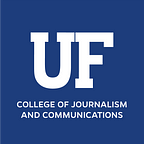A Picture Really is Worth a Thousand Words
By Dorothy Hagmajer
It’s not if you use it, but how.
The use of social media as a tool for audience engagement is standard practice. For some organizations, it is a way to expand their customer base and establish a brand’s character. For institutions of health education and research, it is an opportunity to save consumers both time and trouble by directing them to reliable resources for their health.
Of course, the existence of these resources becomes moot if no one is using them.
“We produce a lot of information, and we put it online or on social media hoping that consumers will find that information, that they will read it and that they will react to it,” Yulia Strekalova, fourth-year Ph.D. student and director of grant development at the University of Florida College of Journalism and Communications, said. “But evidence shows that is not always the case.”
“Systematically understanding what kind of information attracts attention and engagement from health information consumers is the general line and the general direction where this research goes,” Strekalova explained.
One of the many health organizations using social media platforms as a method of outreach is the National Cancer Institute (NCI). The NCI provides audiences with resources concerning cancer prevention, treatment, and research advancements. Information provided by the organization distinguishes itself from the abundance of questionable health anecdotes and tips available on the Internet through two factors — its objectivity and accuracy.
When users are searching for information concerning their health, evidence-based resources are what separate the helpful from the harmful. And when the stakes are high, it helps to know what isn’t working — and what is.
Together with Janice Krieger, associate professor and director of the STEM Translational Communication Program at the College of Journalism and Communications, Strekalova conducted a study demonstrating that audience engagement was associated with the format of cancer-related social media posts. In particular, Facebook posts with photos received significantly more likes, comments, and shares than videos, links or status updates.
“We expect instant gratification from information on social media,” Strekalova said. “Videos, for example, are usually a few minutes long. Watching one in its entirety requires a different kind of commitment than glancing at a picture. “
Time during which audiences could be scrolling past the post in question, already in search of something new.
The study’s results are in line with other findings that show online users’ attention span is becoming increasingly shorter. Consequently, information in digestible and eye-catching mediums — such as photos and pictures — is significantly more attractive than something demanding more time and energy. The theory of information richness (IRT) predicts that written media transfers less “rich” information than images, and videos are considered richer than images; however, the appropriate level of information richness is situation-dependent. But this is not to say videos are better than pictures or vice versa — there is a time and a place for everything.
“Organizational websites, where people are coming in with the intention of seeking deeper engagement, might be a more effective placement for videos than social media channels,” Strekalova said.
Knowing which posts are most effective is especially useful when organizations are limited to a specific budget. The cost of producing a video, regardless of length, is higher than the cost of producing a picture with words. Additionally, while government and official websites list equally reputable resources (videos included), social media sites such as Facebook often attract a larger, more diverse audience, providing organizations with a valuable platform through which they have the opportunity to reach audiences, both at-risk and other.
Social science researchers are starting to work with large, comprehensive datasets that could lead to the better understanding of social media audiences. In this case, the study’s analysis of NCI Facebook page user engagement through an aggregation of likes, comments and shares on the page is an essential step to making the National Cancer Institute’s dissemination of pertinent health information as efficient and user-friendly as possible.
“This was not something conceived in a lab, or as an experiment,” Strekalova said. “It was a natural observation.” “The exciting part is looking at a lot of data points holistically and systematically from a perspective where you finally see the big picture.”
Dorothy Hagmajer is a research assistant in the STEM Translational Communication Research program.
